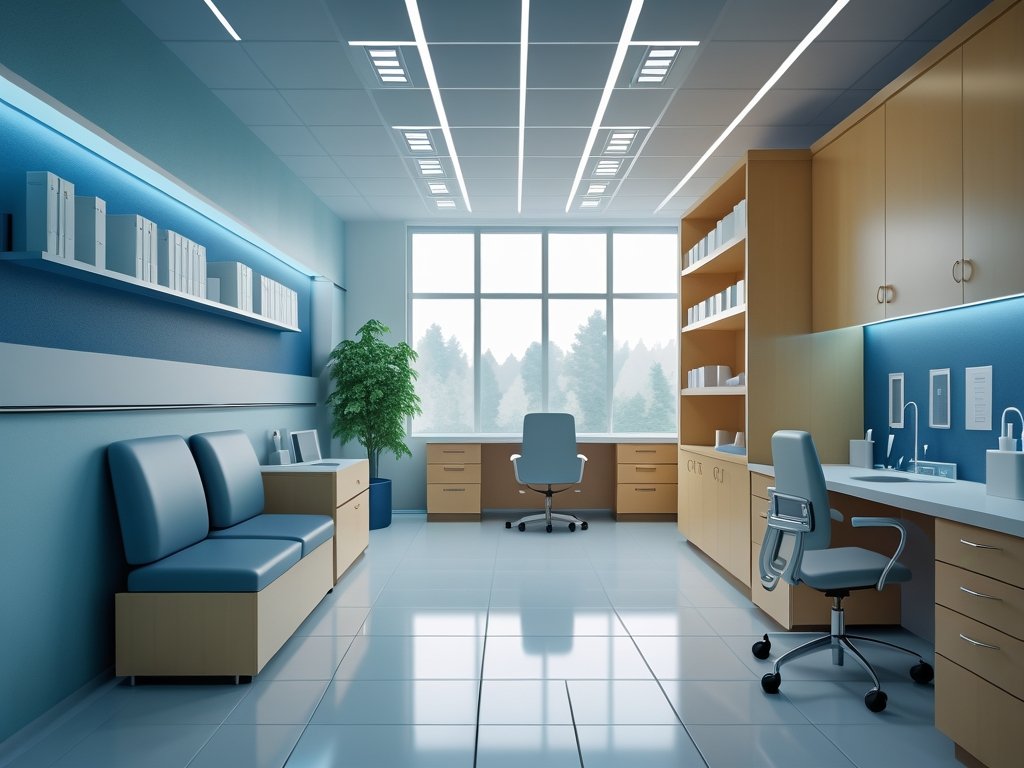Preventing Bladder Irritation in Cold Offices
The modern office environment often prioritizes efficiency and cost-effectiveness, sometimes at the expense of personal comfort. One surprisingly common consequence of this is bladder irritation, particularly in workplaces where temperatures are kept low to conserve energy or maintain equipment functionality. Many individuals find themselves needing frequent bathroom breaks, experiencing a persistent urge to urinate, or even discomfort – all stemming from prolonged exposure to cold environments. This isn’t merely an inconvenience; it can significantly disrupt concentration, productivity, and overall well-being at work. Understanding the mechanisms behind this phenomenon and implementing preventative measures is crucial for maintaining a comfortable and productive workday.
The connection between cold temperatures and bladder irritation isn’t always immediately obvious. It’s not about getting a “cold” in your bladder; rather, it’s related to how our bodies respond physiologically to temperature changes. When exposed to the cold, blood vessels constrict – a natural response meant to conserve heat. This constriction can also affect blood flow to the kidneys and bladder, increasing urine production as the body attempts to regulate itself. Furthermore, shivering, which is common in colder environments, puts extra strain on pelvic floor muscles, potentially exacerbating existing sensitivities or contributing to discomfort. This combination of factors creates a perfect storm for bladder irritation, impacting numerous individuals working in chilled offices.
The Science Behind Cold-Induced Bladder Issues
The physiological mechanisms at play are more complex than simply ‘being cold.’ When the body experiences a drop in temperature, it activates the sympathetic nervous system – the part responsible for “fight or flight” responses. This activation leads to several changes that directly impact bladder function. One key aspect is diuresis, an increased production of urine by the kidneys. The body attempts to conserve core heat and often does so by increasing fluid excretion. This isn’t always consciously perceived as cold, but even a slightly chilled environment can trigger this response over time.
Furthermore, cold temperatures can directly affect the detrusor muscle – the muscle in the bladder wall responsible for contraction during urination. When cold, muscles tend to become more sensitive and prone to involuntary contractions. In individuals with pre-existing conditions like overactive bladder or interstitial cystitis, even mild temperature changes can exacerbate symptoms. It’s important to note that this isn’t a condition limited to those with diagnosed issues; healthy bladders can also be affected by prolonged cold exposure, leading to frequent urges and discomfort.
Finally, the constriction of blood vessels reduces oxygen delivery to the bladder tissues. Reduced oxygenation makes these tissues more vulnerable and potentially increases inflammation, contributing to irritation and sensitivity over time. This creates a feedback loop – cold causes constriction, which leads to reduced oxygen, which exacerbates irritation, prompting even greater sensitivity to temperature changes. It is essential to understand this interplay to effectively address the problem.
Strategies for Workplace Adjustments
Addressing bladder irritation in cold offices requires a multi-pronged approach, starting with advocating for workplace adjustments if possible. While individual strategies are helpful, systemic changes offer the most sustainable solutions.
- Temperature Regulation: The ideal scenario is to request a moderate increase in office temperature. Even a few degrees can make a significant difference. Documenting instances of discomfort and presenting them to management as a productivity concern can be effective.
- Personal Space Heaters: If overall temperature adjustments aren’t feasible, consider using a small, personal space heater directed towards your lower body. This provides localized warmth without significantly impacting the office’s overall climate control system. Caution should always be exercised when using space heaters to avoid fire hazards.
- Airflow Management: Direct airflow from vents can exacerbate cold sensations. Request that vents are redirected or shielded if possible, minimizing direct exposure to drafts.
Beyond these immediate adjustments, employers could consider ergonomic assessments focusing on thermal comfort. Providing options like heated desk chairs or allowing employees to wear warmer clothing without restriction are proactive steps toward creating a more comfortable and productive work environment. The key is recognizing that thermal discomfort isn’t simply a personal preference; it’s a factor impacting well-being and performance.
Hydration & Dietary Considerations
Maintaining adequate hydration is often counterintuitive when dealing with bladder irritation, but reducing fluid intake can actually worsen the problem. Dehydration concentrates urine, making it more irritating to the bladder lining. However, the type of fluids consumed also matters significantly.
- Avoid Bladder Irritants: Certain beverages are known to exacerbate bladder issues. These include caffeine (coffee, tea, soda), alcohol, carbonated drinks, and citrus juices. Reducing or eliminating these from your workday can provide substantial relief.
- Prioritize Water: Plain water remains the best choice for hydration. Sip on it consistently throughout the day rather than consuming large amounts at once. This helps avoid overwhelming the bladder.
- Consider Herbal Teas (with caution): Some herbal teas, like chamomile or ginger, may have soothing properties. However, be mindful of potential interactions with medications or sensitivities. Always consult with a healthcare professional before introducing new herbal remedies.
Dietary adjustments can also play a role. Reducing intake of spicy foods, artificial sweeteners, and acidic fruits can help minimize bladder irritation. A balanced diet rich in fiber promotes overall health and may indirectly support bladder function. It is vital to remember that these are supportive measures; they won’t eliminate the problem entirely but can significantly reduce its severity.
Pelvic Floor Exercises & Movement
The pelvic floor muscles play a critical role in bladder control, and strengthening them can help mitigate the effects of cold-induced irritation. Kegel exercises, or pelvic floor muscle training, are a simple yet effective way to improve bladder function.
- Correct Technique: To perform Kegels correctly, imagine you’re trying to stop the flow of urine midstream. Contract the muscles involved for 3-5 seconds, then relax for the same amount of time. Repeat this 10-15 times several times a day.
- Consistency is Key: The benefits of Kegel exercises are cumulative. Consistent practice over weeks and months yields the best results.
- Incorporate Movement: Prolonged sitting exacerbates bladder issues. Regular movement – even short walks during breaks or standing up to stretch – improves circulation and reduces pressure on the pelvic floor muscles.
Furthermore, gentle stretching can help release tension in the surrounding muscle groups. Yoga or Pilates may offer additional benefits by strengthening core muscles and promoting overall body awareness. Remember that physical activity should be comfortable and not exacerbate symptoms. If any exercise causes pain or discomfort, discontinue it immediately. It’s important to listen to your body and adjust your routine accordingly.
For those experiencing chronic issues, exploring the connection between diet and bladder health can be beneficial; consider natural lifestyle adjustments to minimize irritation. Understanding how clothing materials might contribute to discomfort is also important – learn about clothing’s impact on bladder health to make informed choices. If you suspect a UTI, it’s crucial to differentiate between irritation and infection; determining the difference between irritation and infection will guide appropriate action. And for those dealing with more complex conditions, understanding treatment options is key – explore tiered treatments for bladder symptoms to find the right approach.
Finally, staying informed about preventative measures can help you proactively manage your urinary health, especially during colder months; easing bladder reactivity to cold is a proactive step toward comfort.





















